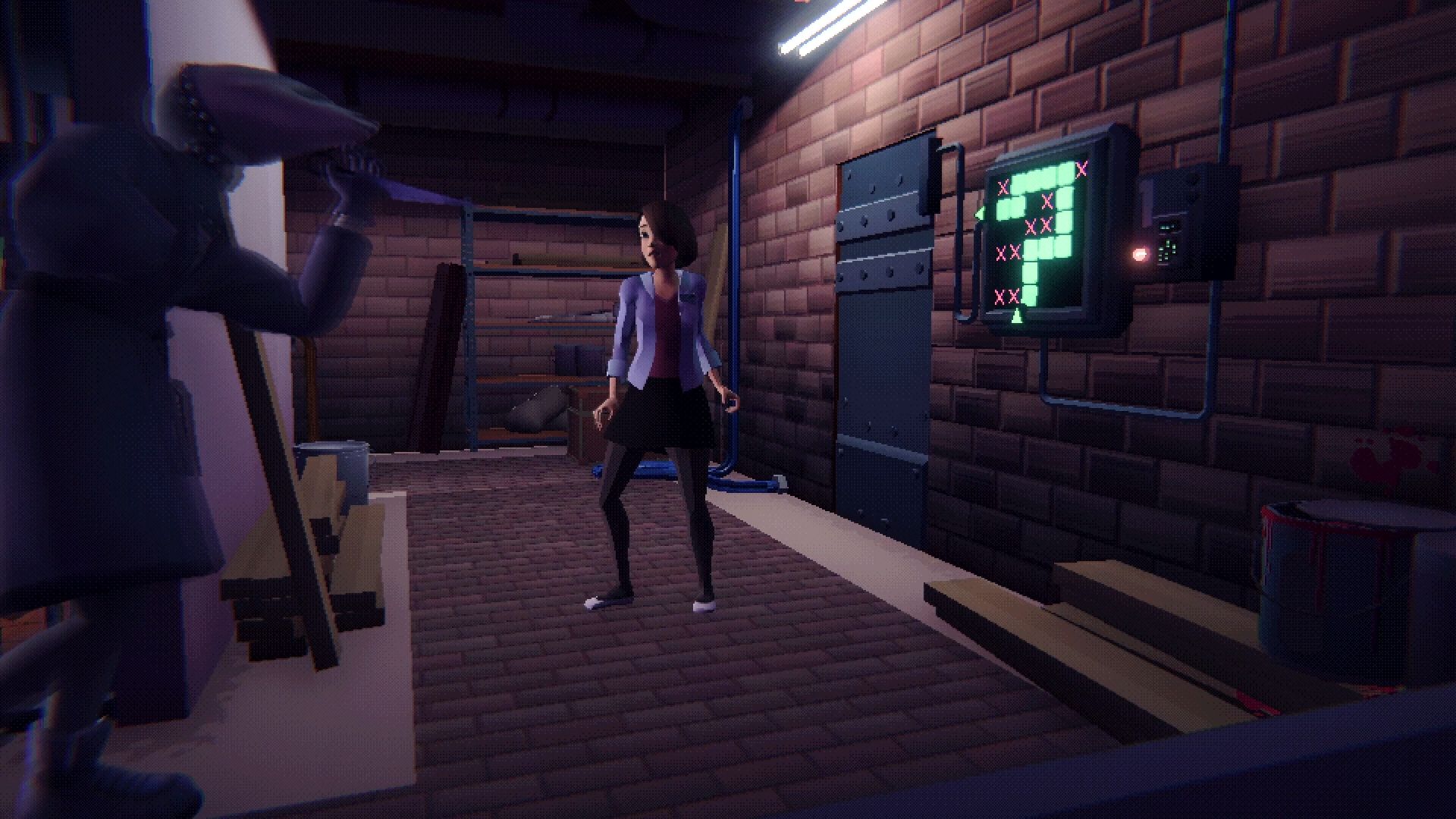Quick Links
Homebody is a new release from developer Game Grumps and publisher Rogue Games, featuring complex puzzles in a survival horror loop. With a killer that seems to appear from nowhere and a constantly ticking clock, Homebody creates excitement and intrigue in a survival horror game reminiscent of late 90s gaming.
Warning: The following article contains minor spoilers for Homebody.When first dropped into Homebody, players will meet Emily, who is heading to a meteor shower party. Emily’s introduction is quick to establish what kind of protagonist will be driving the story of the game, with her people-pleasing tendencies and overall anxiety being prevalent in just the opening lines of dialogue. What appears to be a simple hangout with friends at a rental home will soon turn sinister as a nameless killer comes for the group. While trapped in a depressing time loop, watching her friends die over and over, Emily will have to solve various puzzles to uncover the truth of what is really going on.
An Isolated Story Worth Telling
As Emily meets up with her friends, it quickly becomes obvious she will not do anything to disrupt the night, even if it means hiding everything she truly feels. Emily will repeatedly override dialogue choices and opt to not cause any waves, regardless of what players select. As routine events in the time loop begin to unfold for the first time, Emily will be forced to wander the unfamiliar darkness of the house looking for clues, all while stumbling across the bodies of her friends. As she progresses through the night, her murder by the killer that spontaneously appears as if from nowhere will be inevitable, thus beginning the time loop.
Each time that Emily dies, she will be reset back to the time of her initial arrival. Her friends will have no recollection of anything that has happened, while Emily, who is fully aware, must repeatedly work to save them all. Each friend will have their own uses through dialogue where they provide Emily with helpful clues relating to puzzles she’s working on. Before Emily is reset each night, there will also occasionally be a cutscene showcasing some of Emily’s memories with her friends, merged with her own inner thoughts.
As it is slowly revealed how isolated Emily has allowed herself to become and Homebody begins to reach its climax, Emily’s struggle with agoraphobia will become the thread that seemingly ties everything together. Her friendship with one of the other notable characters, Francine, will begin to expand upon the idea that despite Emily’s effort to not let down those she loves, she has ironically severed herself from them completely. The conclusion of the narrative shines a light on an anxiety disorder in a way that does it justice, and further opens the door to get a conversation about agoraphobia started.
Nostalgic Gameplay With Retro Graphics
As a self-proclaimed homage to early PlayStation graphics, Homebody remains true to its inspiration. Though the graphics are intentionally designed to feel older, they maintain a polished feel that assures players these choices were intentional. The retro-style graphics actually work perfectly as Homebody is able to maintain the desired creepy undertone while not being a sensory overload, allowing players to maintain their focus on what’s important. Not only that, but it helps to establish the time period of the game through association without having to explicitly state it.
Perhaps there's another added benefit to the less intensive graphics - there are no obvious technical issues with the game’s overall performance. However, there are some general gameplay mechanics that do feel a bit clunky at times. While exploring the house, players will be forced to deal with fixed camera angles, which becomes an issue when navigating between spaces, as the camera will suddenly shift and cause players to bounce back and forth between angles as they move to adjust their direction at the same time the camera angle switches. While it doesn’t truly inhibit gameplay, it is something worth noting since time passes rather quickly in Homebody and every second is precious.
There are a few other quirks, such as Emily sometimes twisting her entire upper torso around to open doors, but these also do not inhibit players in any way. Rather, they provide a brief moment of comic relief in an otherwise tense setting, however unintentional that may be. Interacting with objects can also sometimes be a bit frustrating since Emily can easily cancel herself out of an interaction if the player moves before she gets fully into position. However, with all that being said, the overall gameplay is still relatively smooth otherwise and there are no major aspects that should keep any player from enjoying it as intended.
Classic Puzzles & Original Mind Benders
As this is a survival horror puzzle game, the different puzzles throughout are perhaps the most important aspects, second only to the story itself. There are a variety of puzzles in Homebody, giving players a chance to test themselves with everything from Minesweeper to complex interlinking objects. Exploring the house and discovering different connections among things will be a big aspect to completing the game, and while it does a good job of making a majority of clues fairly obvious, some will require a little bit of work to solve.
Thankfully, those who are not as well-versed in puzzle games but still hope to experience the story can find solace in the fact that various hints will be given through Emily’s friends and even Emily's own subconscious, in the form of Pete. This superior hint system is wonderful, as it gives seasoned puzzle-solvers the chance to figure things out on their own, but also won’t have to leave less-versed players stuck indefinitely. While many of the puzzles are straightforward, that’s not to say that they’re easy. In fact, many feel like a puzzle straight out of the Silent Hill series.
The complexity, however, ensures players experience a sense of accomplishment as they solve each one. Additionally, due to Homebody’s convenient feature of keeping a log, any previously solved puzzles can easily be referenced. Though some of the puzzles will need to be repeated each time Emily is reset, once certain progress is made, there will be codes that open shortcuts to help circumvent some of the more tedious ones. This allows players to continuously work on new clues without having to spend the entire time limit re-doing everything.
Final Thoughts & Review Score
Homebody is truly a wonderful debut from the mind of Jory Griffis, with features reminiscent of notable classics such as The 7th Guest, Silent Hill, and Clock Tower, that are sure to leave devoted survival horror fans engaged and enthralled. As Emily progresses in the narrative, the killer will begin to appear earlier and earlier, creating a sense of urgency in the player that everything is about to come to a grand finale. With the world having collectively gone through its own period of isolation recently, Emily’s struggle with agoraphobia really drives home some feelings that many are sure to relate to and be moved by. The satisfying conclusion to Emily’s story is one that won’t soon be forgotten.
Source: Rogue Games, Inc./YouTube
Homebody releases on June 1 on PC, PS4, Xbox One, PS5, Xbox Series X/S, and Nintendo Switch. Screen Rant was provided with a PS5 code for the purpose of this review.




